Paolo Icaro in Fabriano: unveiled the work Artificio naturale at Pinacoteca Molajoli
On the occasion of the 20th Day of the Contemporary, promoted by AMACI (Association of Italian Contemporary Art Museums), the City of Fabriano inaugurated today, Saturday, October 12, 2024, at 11 a.m., an important new acquisition for the collection of the Pinacoteca Civica Bruno Molajoli: it is Artificio naturale, an imposing environmental sculpture created by artist Paolo Icaro (Turin, 1936).
The project, curated by Marcello Smarrelli, was promoted by the City of Fabriano and conceived in collaboration with the Fondazione Ermanno Casoli. Its funding was made possible thanks to the PAC2022-2023 (Plan for Contemporary Art), a program promoted by the Ministry of Culture’s General Directorate for Contemporary Creativity, testifying to the commitment of Italian institutions to the enhancement of contemporary artistic heritage.
Paolo Icaro, born in Turin in 1936, is a leading figure in Italian and international contemporary art, known for his tireless artistic research that has now spanned more than 60 years. Since the early 1960s, the artist has explored the expressive potential of sculpture. Although he does not fully identify with a specific movement, Icarus has often shared the research spirit of Arte Povera, an artistic movement that favors simple materials and a primitive, almost essential visual language. Over the course of his long career, Icaro has exhibited in some of the most important international exhibitions of the twentieth century, and his works are part of prestigious public and private collections, confirming a notoriety that has transcended national borders. His works, which combine conceptual reflection with the materiality of objects, are expressions of a constant dialogue between space, form and time.
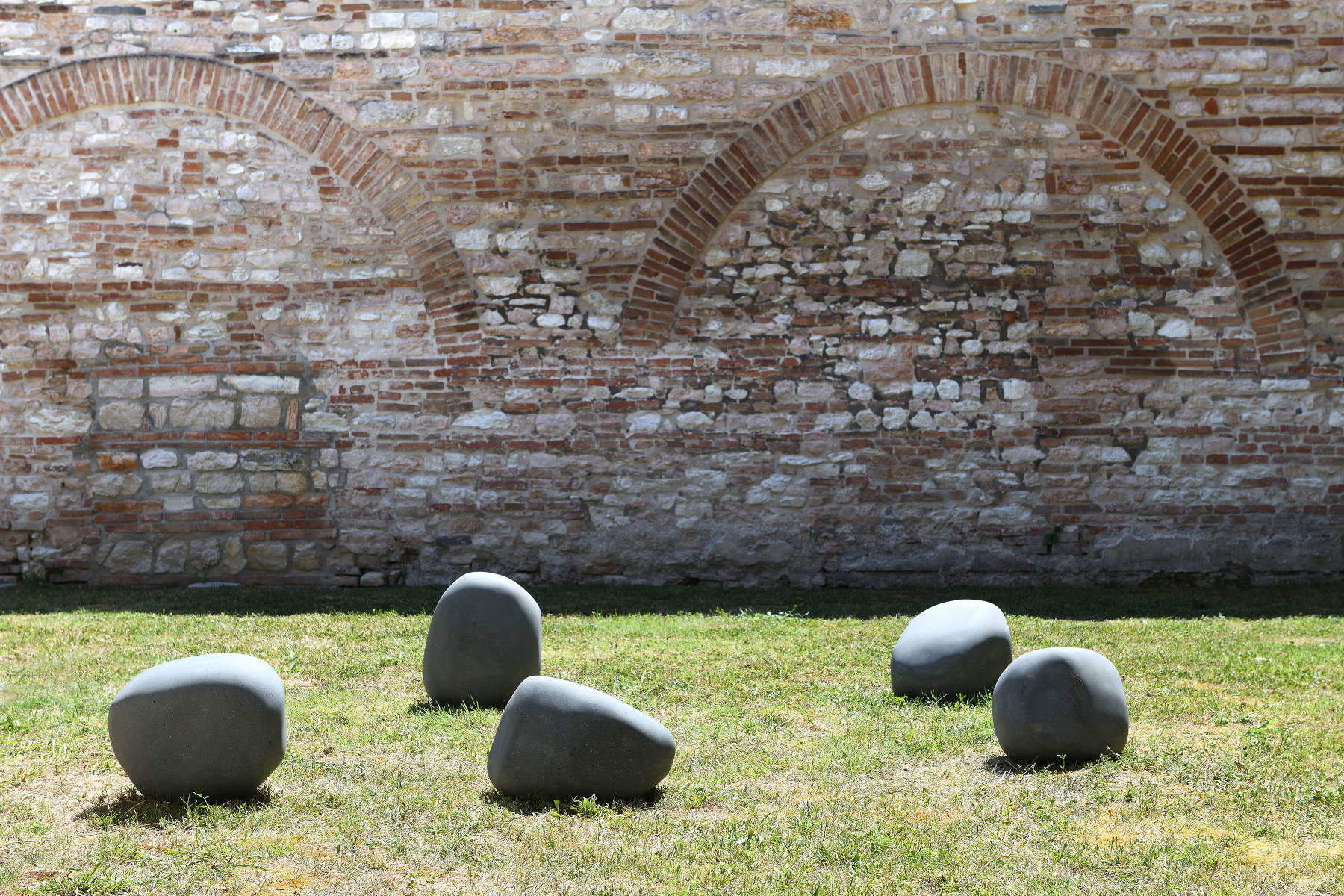
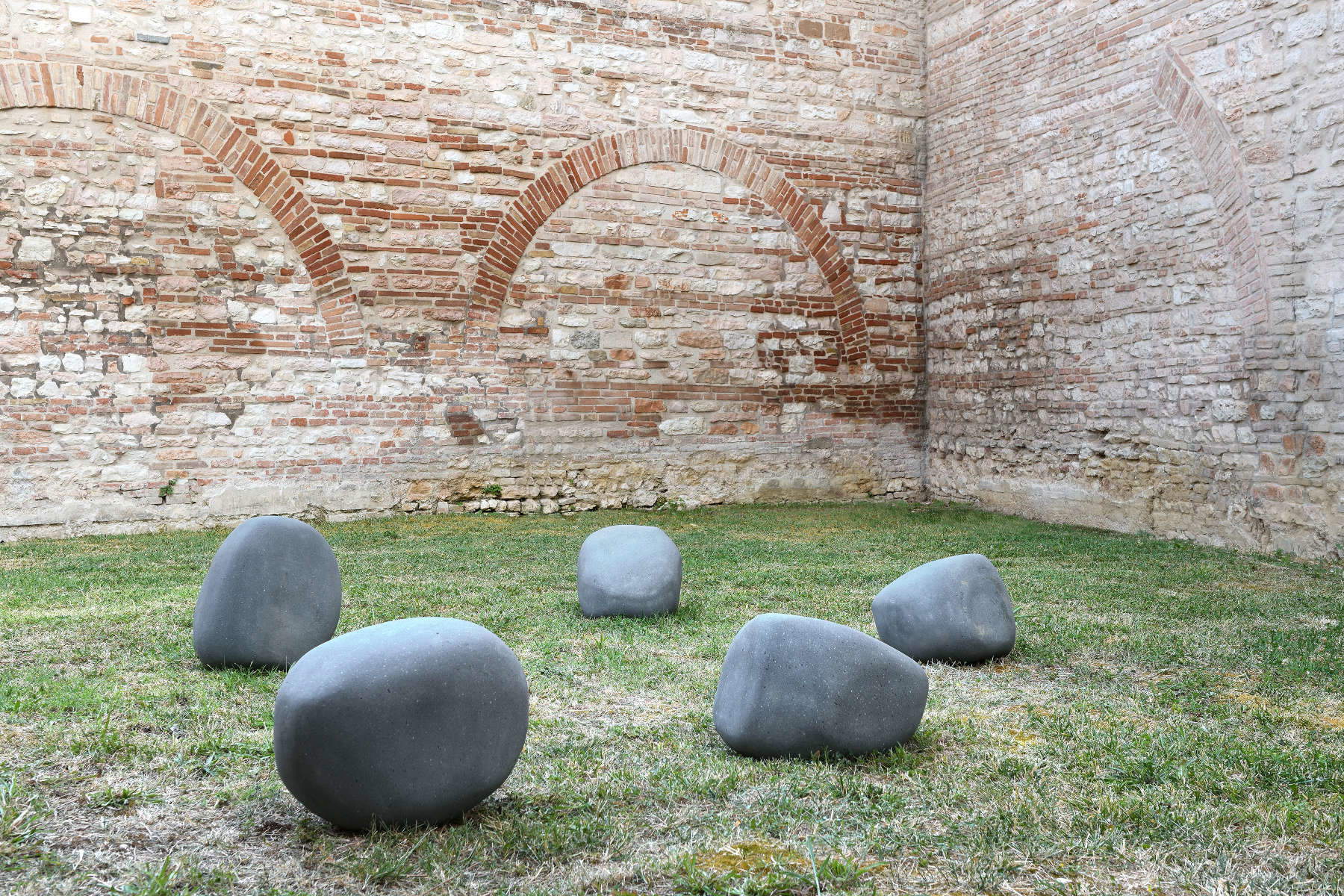
The artist, who has always been interested in exploring the relationship between body, space, and matter, has been able to blend traditional techniques and contemporary technologies to create works that invite the viewer to interact with their surroundings. Artificio naturale fully reflects this approach. Made in 2011, Artificio naturale is an environmental sculpture that, in its apparent simplicity, conceals a complex and thoughtful creative process. The work consists of five stone boulders, arranged on the ground in the Bruno Molajoli Art Gallery. What at first glance might appear to be a simple minimalist intervention in the museum space, a direct reference to a natural element, is instead the result of meticulous technical and conceptual research. The creation of the work began with clay modeling of an “ideal” stone, a form smoothed and perfected by the artist to evoke the appearance of a stone shaped by the water of a stream. This original object was then reproduced in plaster and later in concrete, until it was finally carved in Matraia stone, a material characterized by its blue-gray hue and its exceptional compactness and strength.
The five boulders, while having the same shape, all appear different from each other in that they are placed in different positions, each balancing on a specific point. This variation in arrangement not only alters the viewer’s perception of the work, but also underscores its founding concept: the dialogue between natural form and human artifice, between chaos and order, between randomness and artistic design.
As in many of Icarus’ works, Artificio naturale is the result of a reflection on the interaction between the artwork and the space that hosts it. Stone, which in nature might look like just a fragment of landscape, is here transformed into an object of contemplation, a symbol that transcends its physicality to become an expression of a broader thought. The visitor is invited not only to observe, but to confront the space, to reconsider the relationship between nature and human intervention. It is an invitation to reflect on the transformation of matter and time, key elements in Icarus’ poetics. The work, with its static and monumental character, fits into a museum context that, by definition, is an “artificial” space designed for cultural enjoyment. However, the choice to represent a natural element such as stone through a highly technological and refined creative process accentuates the contrast between the natural and the artificial, between chaos and control, which forms the conceptual heart of the work.
“Marble becomes ’artifice’ in the clash-contrast between matter and materiality,” the artist explains. “Artifice not to be understood as illusion or pretense, but as ’artfully made transformation,’ and therefore natural, which allows the memory of the material to be heard.”
Curator Marcello Smarrelli says, "The relationship between natural and artificial that animates the work thus extends to the exhibition context, as in a mise en abyme: nature inhabits, in fact, the garden that surrounds the museum, housing different species of plants; artifice, on the other hand, is represented by the architecture of the historic building that houses the Pinacoteca-the old hospital of Santa Maria del Buon Gesù, which stands on Fabriano’s central Piazza della Cattedrale-along with the new wood and glass construction that is grafted onto the courtyard. The sequence could also continue with the interior of the building, which houses the ’artifice’ par excellence, that of art."
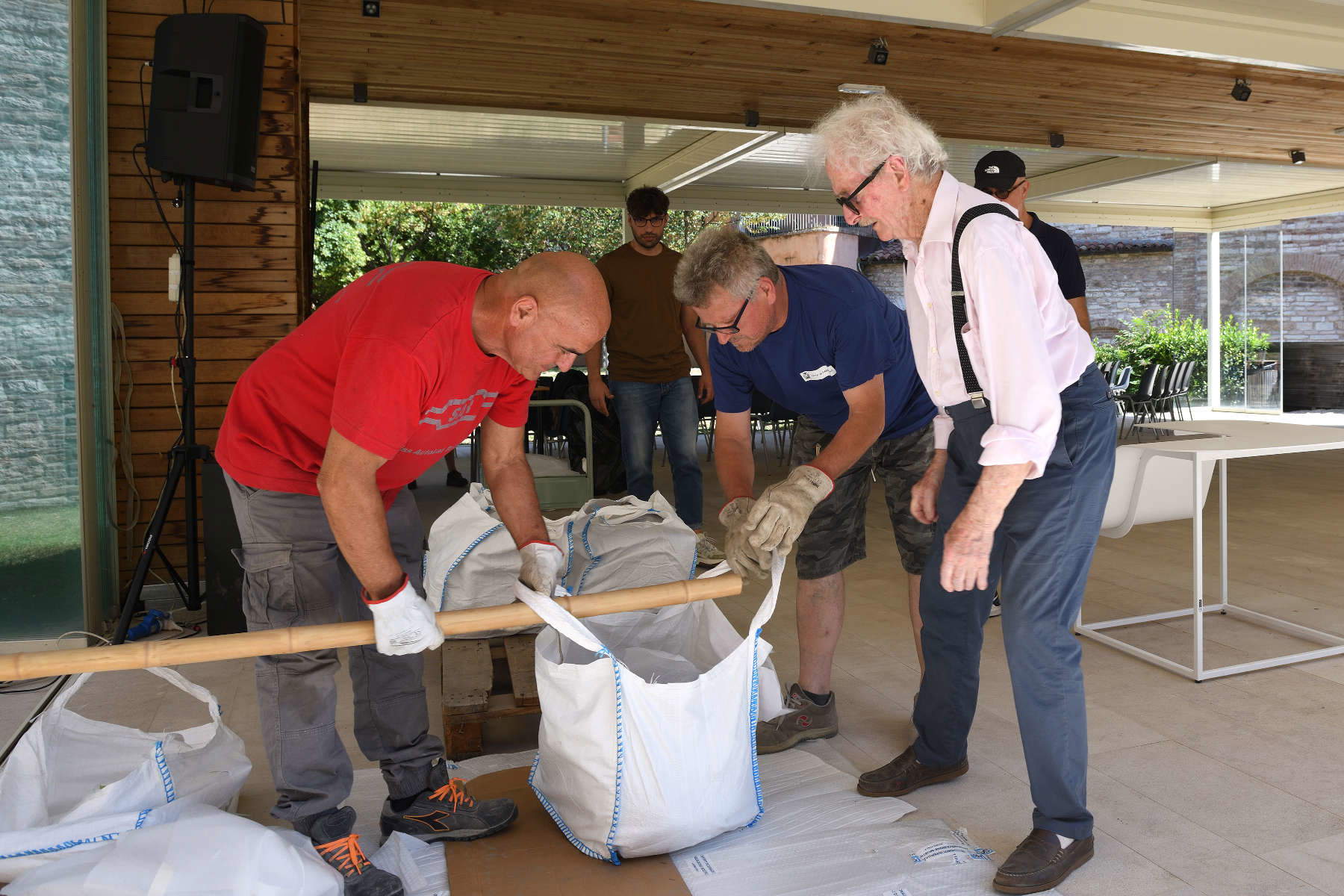
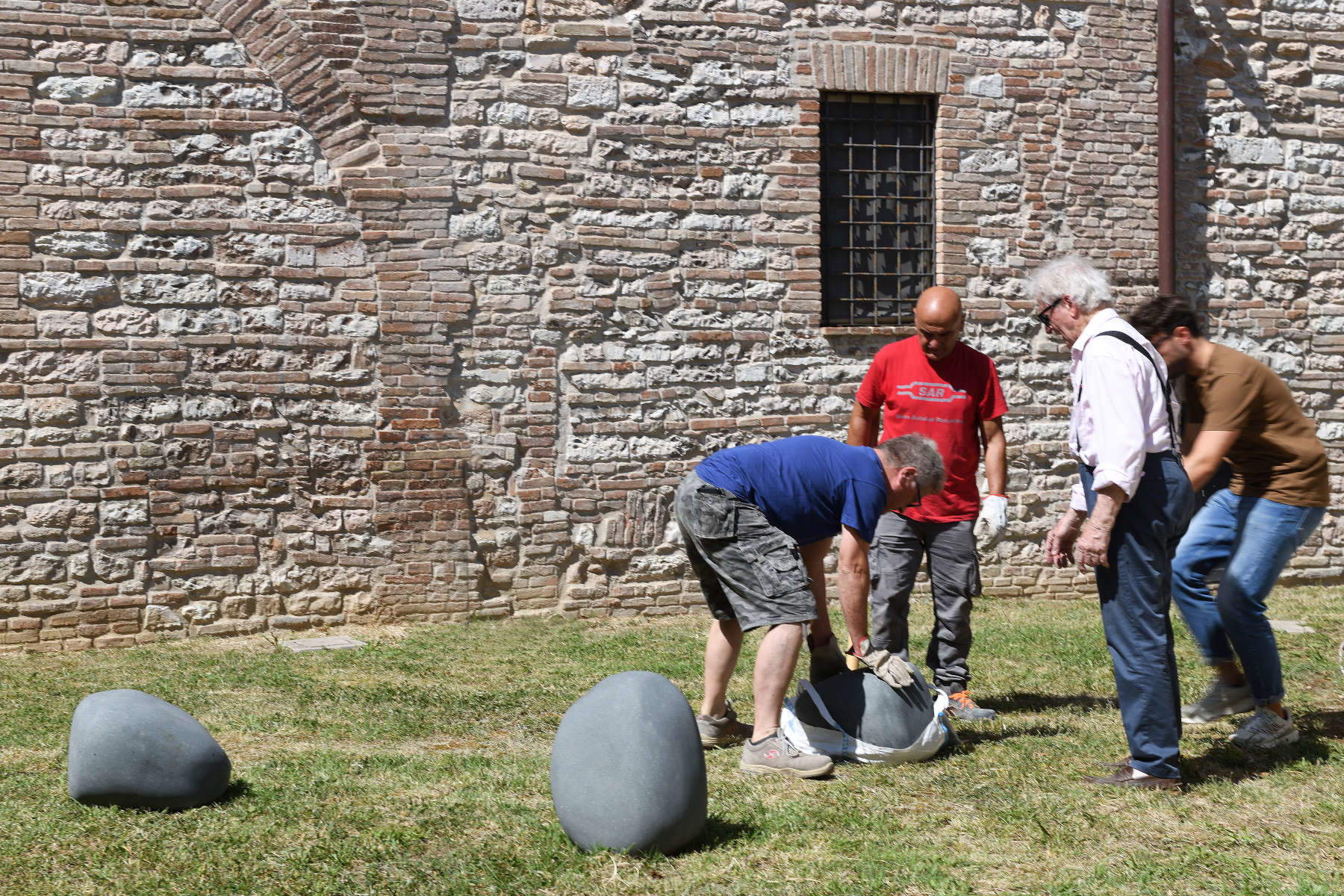
Maura Nataloni, Councillor for Beauty of the City of Fabriano, says, “The acquisition of Artificio naturale by Paolo Icaro represents an important step forward for the Pinacoteca Civica Bruno Molajoli. The result of a positive outcome of the ministerial call dedicated to increasing public collections with works of contemporary art and thanks to the collaboration with Fondazione Ermanno Casoli, this new entry enriches the dialogue between the different eras represented in our collection. Thus, the project reaffirms the Fabriano City Council’s desire to invest in contemporary and contemporary art through a series of initiatives, up to the creation of a place dedicated to it.”
The presentation of Artificio naturale at the Pinacoteca Civica di Fabriano is accompanied by an articulated program of parallel activities. First, the exhibition will be flanked by a series of public meetings in which it will be possible to learn more about the figure of Paolo Icaro and the significance of his work in the contemporary art scene. In addition, educational workshops dedicated to children are planned, with the aim of bringing even the youngest children closer to the world of contemporary art through creative experiences that stimulate their critical sense and imagination.
Completing the project will be the publication of a volume, published by Chimera Editore, with texts by Marcello Smarrelli and Simone Ciglia, with a reflection on the work of Icarus and the cultural context in which it is inserted. Finally, the collaboration between the City of Fabriano and Fondazione Ermanno Casoli confirms the desire of both institutions to promote and spread contemporary art in the area, creating a dialogue between artists, the public and the local community.
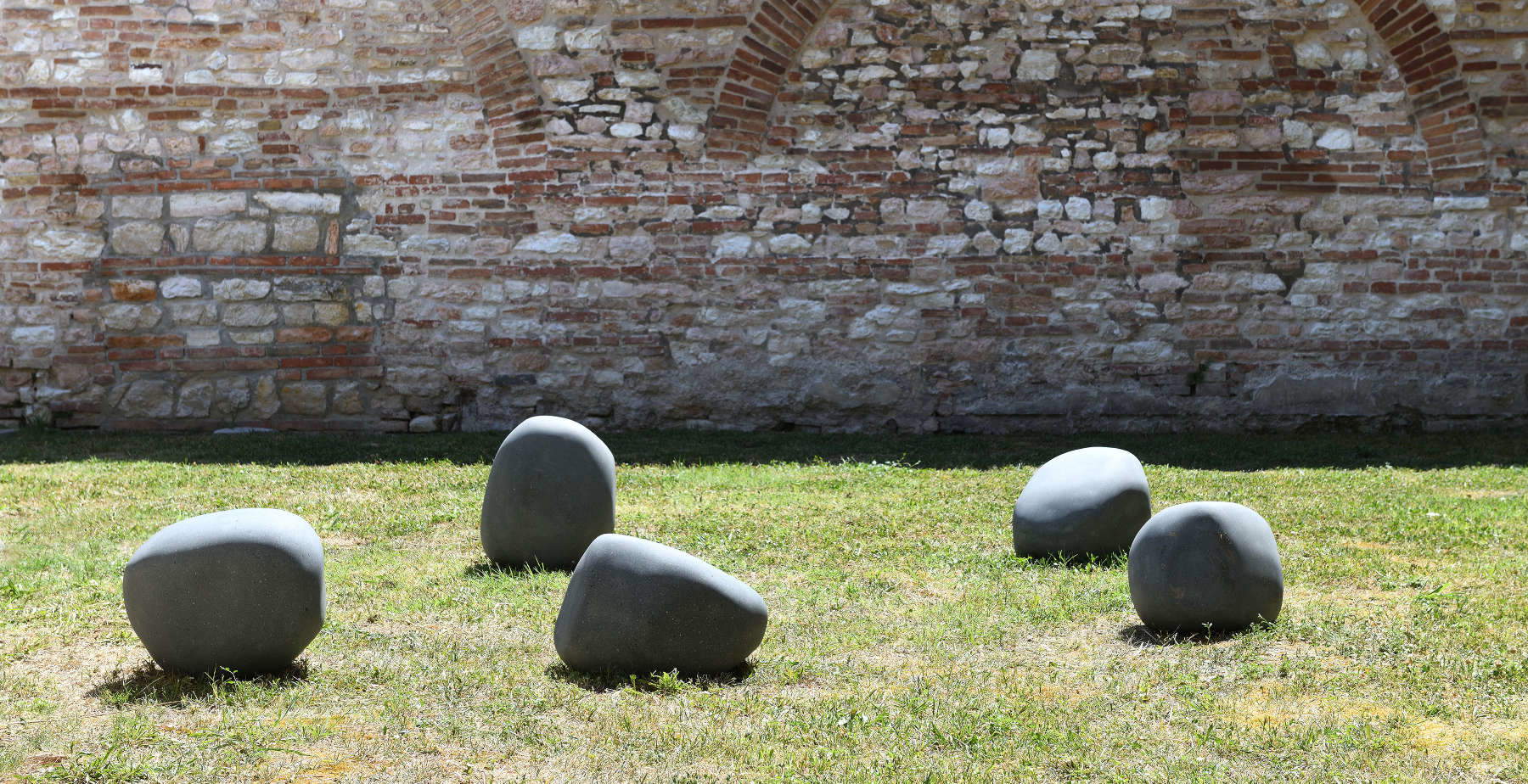 |
| Paolo Icaro in Fabriano: unveiled the work Artificio naturale at Pinacoteca Molajoli |
Warning: the translation into English of the original Italian article was created using automatic tools. We undertake to review all articles, but we do not guarantee the total absence of inaccuracies in the translation due to the program. You can find the original by clicking on the ITA button. If you find any mistake,please contact us.





























